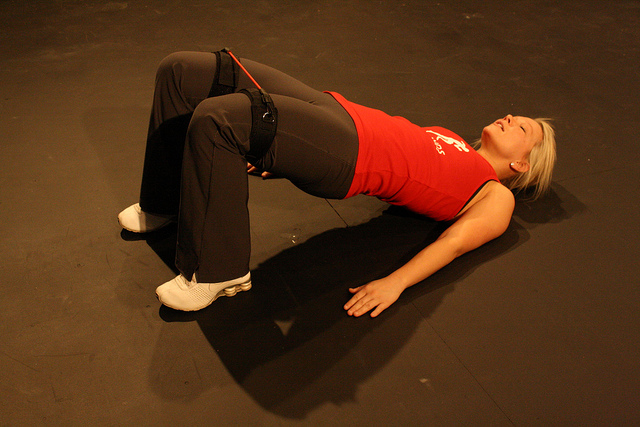Back Pain
 Many people struggle with some form of back pain at some point in their life. Exercising with the resistance bands is an effective way to strengthen the back muscles. The benefit of using the resistance band exercises on the back is that it helps alleviate joint and muscle pain, while lowering the chance of injury. Most people with any kind of back pain focus on their flexibility and becoming more mobile by using the resistance band exercises. Learn how to strengthen the necessary ligaments, tendons, and muscles that cause back pains, making difficult movements pain free and comfortable.
Many people struggle with some form of back pain at some point in their life. Exercising with the resistance bands is an effective way to strengthen the back muscles. The benefit of using the resistance band exercises on the back is that it helps alleviate joint and muscle pain, while lowering the chance of injury. Most people with any kind of back pain focus on their flexibility and becoming more mobile by using the resistance band exercises. Learn how to strengthen the necessary ligaments, tendons, and muscles that cause back pains, making difficult movements pain free and comfortable.
The resistance bands allow a person with severe back pain to use natural force to strengthen the muscles needed to relieve upper, middle, and lower back pain. When a person sits in front of a computer all day they are unable to actively use their back muscles, which can lead to walking with sluggish shoulders, their head down, and their back slumping over. Many physical therapists are now using the resistance bands exercises to build strength in the injured back areas.
Why Use Resistance Band Stretching On All Areas of the Back?
- Can increase flexibility in the back muscles, tendons, and ligaments to help alleviate back pain by stretching and releasing pressure.
- Controls individual's movements to build stability and flexibility.
- Builds strength, conditions, and rehabilitates the back by providing continuous resistance with the option to increase the level of difficulty. This provides a way to stretch and work all of the back muscles, instead of just the large ones. Back pain is often caused by unstable smaller muscles that are overlooked.
- Posture improvement since bad posture can also cause back pain.
- Improving strength and bone density for the back.
- Increases balance and mobility to reduce and prevent back pain.

Simple Resistance Band Exercises For All Areas of Back Pain
Always remember to warm up before beginning a resistance band exercise. The idea of these exercises is to alleviate or reduce back pain, not cause more by not warming up properly.
- Put both feet in the middle of the Myosource Upper Body Kinetic Band with a handle in each hand. Place the feet shoulder or hips width apart and squat as low as possible while arching the back. Once in the lowest squatting position, stand up to the starting position. Repeat for 3 sets, 10-12 squats per set.
- Bending Side to Side: Place the middle of the Myosource Upper Body Kinetic Band under one foot, holding both ends of the band on the same side as the foot standing on the strap. Make sure to continue facing forward throughout the entire exercise. Bend laterally from side to side.
- Rowing while Standing: Place the middle of the Myosource Upper Body Kinetic Band around a solid pole and make sure the feet are parallel to each other. Bend the knees slightly with one end of the band in each hand and begin lifting the arms until they are at a 90 degree angle. The palms of the hands should face the floor, while the elbows are pulled backwards in a rowing motion. Slowly go back to the first position and repeat.
Use the Myosource Resistance Bands to stretch any sore muscles and restore the back to its intended purpose. Improve both posture and pain by using the resistance bands for rehabilitation and prevention.
 Many people struggle with some form of back pain at some point in their life. Exercising with the resistance bands is an effective way to strengthen the back muscles. The benefit of using the resistance band exercises on the back is that it helps alleviate joint and muscle pain, while lowering the chance of injury. Most people with any kind of back pain focus on their flexibility and becoming more mobile by using the resistance band exercises. Learn how to strengthen the necessary ligaments, tendons, and muscles that cause back pains, making difficult movements pain free and comfortable.
Many people struggle with some form of back pain at some point in their life. Exercising with the resistance bands is an effective way to strengthen the back muscles. The benefit of using the resistance band exercises on the back is that it helps alleviate joint and muscle pain, while lowering the chance of injury. Most people with any kind of back pain focus on their flexibility and becoming more mobile by using the resistance band exercises. Learn how to strengthen the necessary ligaments, tendons, and muscles that cause back pains, making difficult movements pain free and comfortable.

